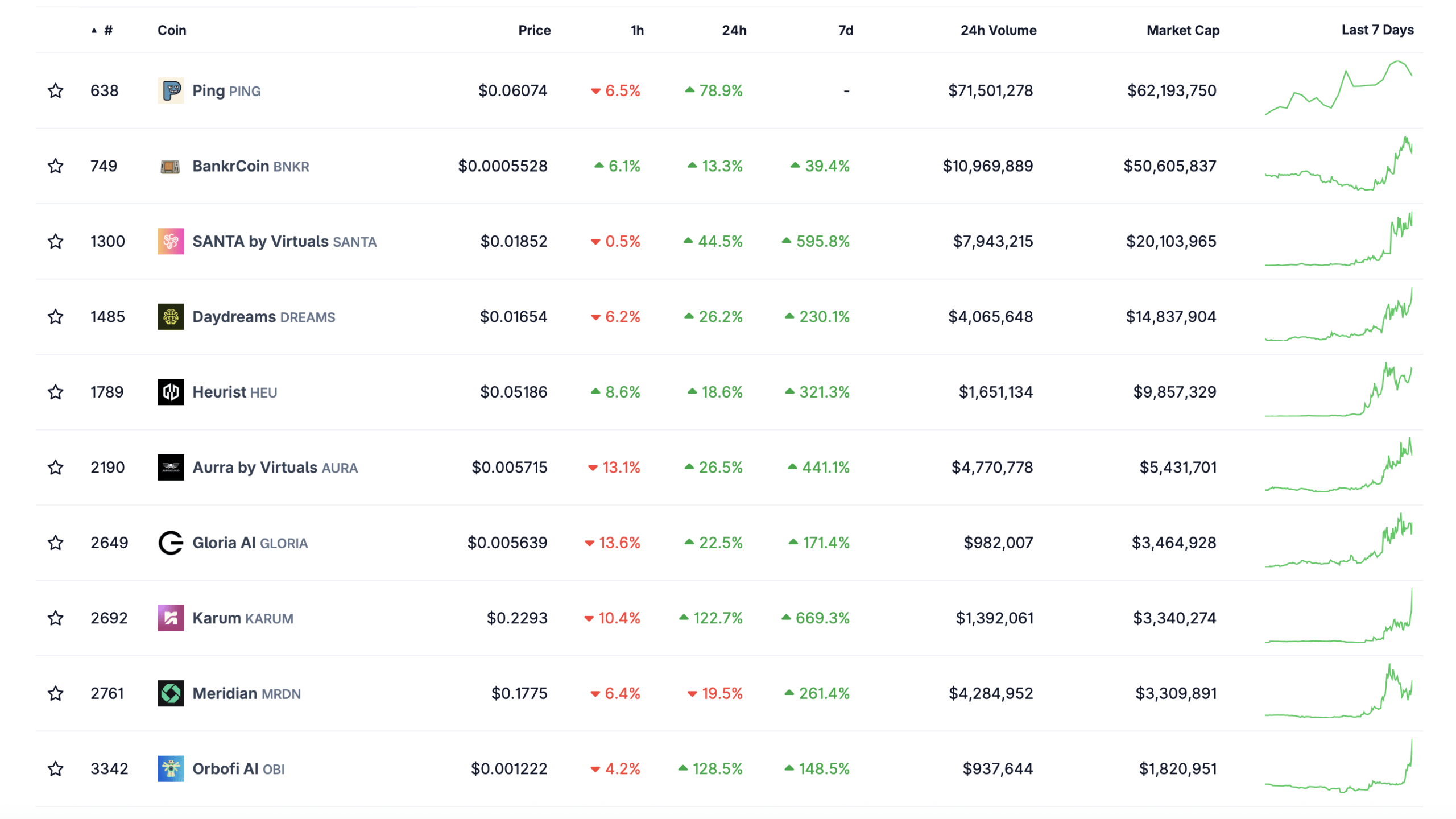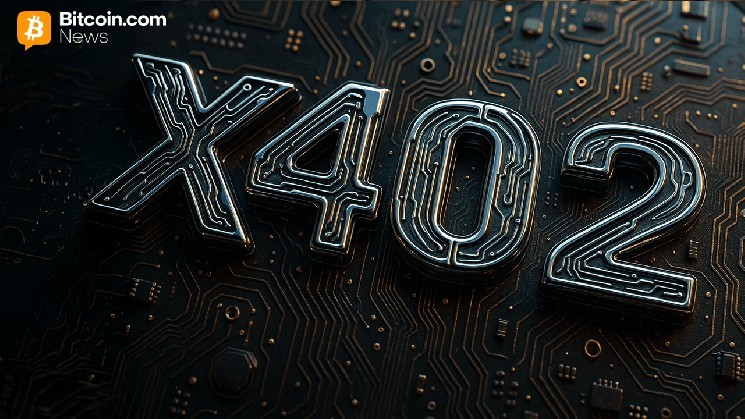Listen to the article
Coinbase’s x402 protocol is turning the forgotten HTTP “Payment Required” code into a real-world micropayments engine—and now Coingecko has rolled out a full-blown category for the growing swarm of tokens built around it.
What Is x402?
x402 is an open-source, HTTP-native payment protocol developed by Coinbase that revives the long-unused HTTP 402 status code. In plain terms, it lets websites, APIs, and even artificial intelligence (AI) agents request payments directly through web requests.
Instead of API keys or monthly subscriptions, users send instant micropayments—often in USDC—straight through the browser. Transactions settle in about two seconds, with zero protocol fees and no middlemen.
Backed by the x402 Foundation—co-founded by Coinbase and Cloudflare in October 2025—the system is already plugged into networks like Google, Visa, AWS, Circle, and Anthropic. It’s chain-agnostic, working across Base, Solana, Polygon, and Sei, making it a key player in the rise of machine-to-machine (M2M) payments in what’s being dubbed the “agentic economy.”
Coingecko’s New x402 Token Category
On Oct. 25, 2025, Coingecko officially added a new token category titled x402, allowing users to track all related coins in one place. The category’s ten listed tokens currently have a combined market capitalization of $178.3 million and $107.6 million in 24-hour trading volume, according to Coingecko’s figures.
While x402 itself doesn’t issue tokens, a handful of crypto projects have built their own around the protocol—each designed to facilitate payments, agent coordination, analytics, or AI integration.
What Do x402 Tokens Actually Do?
These coins serve as utility or governance tokens tied to projects built on the x402 framework. Most are used for AI agent payments, monitoring, and orchestration.

For example, PING—created by Ping Observer—is the first token minted directly via x402 and powers payments for AI agent monitoring. HEU, from Heurist AI, lets users pay per data query in USDC while offering staking rewards. SANTA, by Virtuals, fuels a network of AI “elves” performing cross-chain tasks and airdrops.
MRDN from Meridian Finance brings x402 micropayments to decentralized finance (DeFi), while AURA powers Telegram and Discord bots for onchain payments. GLORIA is a>
The Broader Trend
x402 tokens blend AI and blockchain utility with real payment infrastructure. The concept is simple: AI agents communicating and transacting with each other autonomously using USDC. Some projects are experimental, others functional—but all ride the same emerging trend of web-native, frictionless payments without intermediaries.
Binance and OKX wallets now categorize x402 tokens for discovery, while Coinbase reportedly covers some transaction fees to accelerate adoption.
Market Snapshot
With $178 million in market cap and nearly $108 million in 24-hour volume, x402 tokens are quickly becoming another talking point among crypto, DeFi, and AI enthusiasts. While many are speculative, the underlying payment protocol is already powering practical use cases.
Outlook
Whether x402 becomes the universal payment layer for autonomous agents or just the latest crypto experiment, it’s undeniably giving the web a new financial backbone—one HTTP request at a time.
FAQ 🤖
- What is x402?x402 is an open-source payment protocol by Coinbase that turns the old HTTP 402 code into a real micropayments system for web and AI applications.
- What are x402 tokens?They’re utility and governance tokens from projects that use the x402 protocol for payments, monitoring, and AI agent coordination.
- How big is the x402 market?Coingecko reports 10 listed tokens with a combined market cap of $178.3 million and $107.6 million in daily trading volume. There’s likely more.
- Who’s backing x402?The x402 Foundation, co-founded by Coinbase and Cloudflare, with integrations involving Google, Visa, Circle, and AWS.



